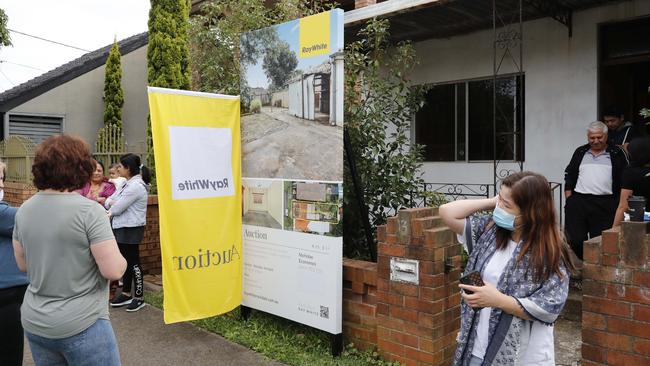
It also plays towards the Prime Minister’s widely reported comment in March that the best way the government could support younger Australians facing higher rental costs is to help them buy a home.
In lifting the caps by up to $150,000, the government is moving to match the recent price increase in the market after last year’s 20 per cent lift in home values.
The new measures should ensure the scheme — which has signed up 60,000 people already — will outpace other federal schemes such as the First Home Super Saver Scheme and the originalFirst Home Owner Grant.
In purchasing a home, buyers are generally required by banks to have a 20 per cent deposit. Under the terms of the scheme, a first-time homebuyer can purchase a home with a deposit of between 5 and 20 per cent and the government steps in to “guarantee” the portion of the required deposit the buyer does not have.
The advantage of the scheme is that buyers can purchase a home on a small deposit — the average in the scheme is 10 per cent. It also allows the purchaser to avoid having to pay mortgage insurance costs that are imposed on borrowers with less than 20 per cent deposit.
Rental costs are climbing fast across the country, with nationwide average rental costs now rising at almost 2 per cent a month. This is largely due to very tight vacancy rates that are close to 1 per cent.

From a policy perspective the weakness of the scheme — in common with all such stimulatory measures in the housing market — is that it pushes up the prices of the very homes first time buyers are trying to acquire. Though there is some evidence that first time buyers as a proportion of overall buyers lift when housing grants are introduced.
In the case of this particular measure, the time may be useful in that house prices may have peaked and economists expect residential property values to drop between 5 and 15 per cent by the end of next year.
Though home prices may be ready to fall from their recent peaks, rental pressures are increasing due to the very low volumes of vacant rental property, especially in the regions.
The price cap increases are linked with the locations where the borrower aims to buy a house — so that the scheme offers the most in dollar terms in Sydney, and less in the regions.
The new terms of the scheme lift the price caps between $50,000 and $150,000 depending on where they first time buyer is making a purchase. Along with the major cities it also includes the Gold Coast, the Sunshine Coast, Newcastle, Wollongong and Geelong.
From July 1, the scheme will apply to homes worth up to $900,000 in NSW, $800,000 in Victoria, $700,000 in Queensland, $600,00 in Western Australia, South Australia and Tasmania. In the territories the ACT will be lifted to $750,000, the Northern Territory will be lifted to $600,000 and Jervis Bay and Christmas Island will stay at $550,000 and $400,000 respectively.
In releasing the scheme the PM also framed the policy measure against a longer-term risk of fading housing supply.
“Australia is set to experience a housing supply crunch, falling by around 35 per cent right at the time that our population resumes its normal growth trajectory,” he suggested.
At its best the scheme provides families with a guarantee that is increasingly being supplied by parents where younger family members cannot meet bank requirements. Under a parental guarantee, the parents put up equity in their home as collateral and guarantee the bank the mortgage their children have taken out will be paid back.
For parents the great advantage here is that, unlike a cash deposit which is losing its power by the day, the guarantee should ultimately be linked with rising property valuations.







The Morrison government is seeking to leverage the success of the government’s First Home Loan Deposit scheme, with a surprise expansion of the “price caps” allowed in the scheme from July 1.